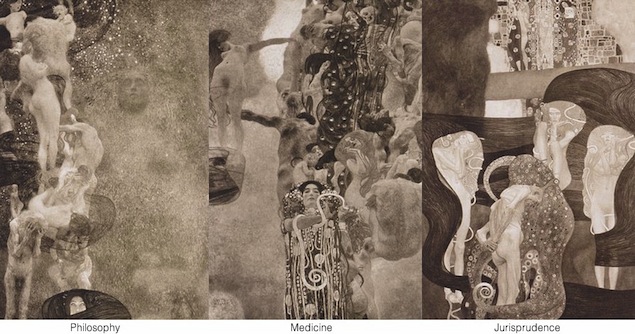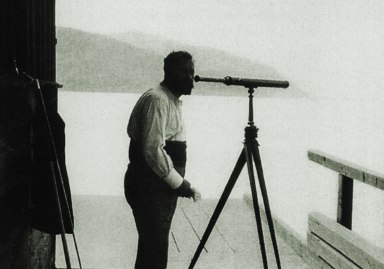- Home
- Others
- Others News
- Gustav Klimt: The Vienna secession years
Gustav Klimt: The Vienna secession years
By NDTV Correspondent | Updated: 15 July 2012 01:24 IST

Click Here to Add Gadgets360 As A Trusted Source

Advertisement
Gustav Klimt grew up in Austria where the Association of Austrian Artists was the de-facto organisation for all artists. The Association, housed in the Vienna Künstlerhaus, was a rather conservative body, with archaic artistic views, and an orientation towards Historicism. (See: Gustav Klimt's 150th birth anniversary marked by Google doodle)
The new breed of artists, including Gustav Klimt, Koloman Moser, Josef Hoffmann, Joseph Maria Olbrich, Max Kurzweil, and others, objected to the prevailing conservatism of the Vienna Künstlerhaus. Ultimately, these artists resigned from the incumbent, and formed The Vienna Secession on 3 April 1897.
It is worth noting that although Otto Wagner is widely recognised as an important member of the Vienna Secession, he was not a founding member.
Gustav Klimt was chosen as the first president of The Vienna Secession (Wiener Sezession), also known as the Union of Austrian Artists (Vereinigung Bildender Künstler Österreichs). The new organisation's aim was to provide exhibitions for unconventional young artists, and to bring the best foreign artists' works to Vienna.
The Vienna Secession also published a magazine called Ver Sacrum ("Sacred Spring") to showcase the members' work.
In the early 1900s, Gustav Klimt was involved in perhaps the biggest controversies of his career. He had been commissioned to create three paintings for the ceiling of the Great Hall in the University of Vienna. When finished, his three paintings, Philosophy, Medicine and Jurisprudence were criticised for their radical themes and material, which many termed "pornographic" at the time.
 The criticism came from all quarters -- political, aesthetic, and religious. As a result, the three paintings were not displayed on the ceiling of the Great Hall. Upset at the furore caused by his work, that he saw as nothing but his artistic expression, Gustav Klimt vowed never to accept a public commission again.
The criticism came from all quarters -- political, aesthetic, and religious. As a result, the three paintings were not displayed on the ceiling of the Great Hall. Upset at the furore caused by his work, that he saw as nothing but his artistic expression, Gustav Klimt vowed never to accept a public commission again.
Unfortunately, the three paintings were destroyed by retreating SS forces in May 1945.
Another controversial Gustav Klimt work from the time was Nuda Verita, which depicted a starkly naked red-headed woman holding the mirror of truth. Above the woman, was Schiller quotation - "If you cannot please everyone with your deeds and your art, please a few. To please many is bad."
In 1902, Gustav Klimt painted a tribute to the legendary composer Beethoven, though it did not go on public display until 1986. The Beethoven Frieze is now on permanent display at the Vienna Secession Building.
Klmit went on annual vacations with his partner Emilie Louise Flöge and her family on the shores of Attersee, a lake in the Salzkammergut area of Austria, and painted many of his landscapes there. Even on his vacation, Gustav Klimt brought his unique approach with him. He would often use opera glasses, telescope, and even telephoto camera lenses to look at landscapes while painting, which helped him efficiently flatten deep space to a single plane.
For more Google doodles, visit this page.

Best Google doodle of 2012
The new breed of artists, including Gustav Klimt, Koloman Moser, Josef Hoffmann, Joseph Maria Olbrich, Max Kurzweil, and others, objected to the prevailing conservatism of the Vienna Künstlerhaus. Ultimately, these artists resigned from the incumbent, and formed The Vienna Secession on 3 April 1897.
It is worth noting that although Otto Wagner is widely recognised as an important member of the Vienna Secession, he was not a founding member.
Gustav Klimt was chosen as the first president of The Vienna Secession (Wiener Sezession), also known as the Union of Austrian Artists (Vereinigung Bildender Künstler Österreichs). The new organisation's aim was to provide exhibitions for unconventional young artists, and to bring the best foreign artists' works to Vienna.
The Vienna Secession also published a magazine called Ver Sacrum ("Sacred Spring") to showcase the members' work.
In the early 1900s, Gustav Klimt was involved in perhaps the biggest controversies of his career. He had been commissioned to create three paintings for the ceiling of the Great Hall in the University of Vienna. When finished, his three paintings, Philosophy, Medicine and Jurisprudence were criticised for their radical themes and material, which many termed "pornographic" at the time.
Unfortunately, the three paintings were destroyed by retreating SS forces in May 1945.
Another controversial Gustav Klimt work from the time was Nuda Verita, which depicted a starkly naked red-headed woman holding the mirror of truth. Above the woman, was Schiller quotation - "If you cannot please everyone with your deeds and your art, please a few. To please many is bad."
In 1902, Gustav Klimt painted a tribute to the legendary composer Beethoven, though it did not go on public display until 1986. The Beethoven Frieze is now on permanent display at the Vienna Secession Building.
Klmit went on annual vacations with his partner Emilie Louise Flöge and her family on the shores of Attersee, a lake in the Salzkammergut area of Austria, and painted many of his landscapes there. Even on his vacation, Gustav Klimt brought his unique approach with him. He would often use opera glasses, telescope, and even telephoto camera lenses to look at landscapes while painting, which helped him efficiently flatten deep space to a single plane.
For more Google doodles, visit this page.
Best Google doodle of 2012
Comments
Catch the latest from the Consumer Electronics Show on Gadgets 360, at our CES 2026 hub.
Further reading:
Austria, Google doodle, Gustav Klimt, Medicine and Jurisprudence, Nuda Verita, Philosophy, The Vienna Secession, Vienna
Related Stories
Popular on Gadgets
- Samsung Galaxy Unpacked 2025
- ChatGPT
- Redmi Note 14 Pro+
- iPhone 16
- Apple Vision Pro
- Oneplus 12
- OnePlus Nord CE 3 Lite 5G
- iPhone 13
- Xiaomi 14 Pro
- Oppo Find N3
- Tecno Spark Go (2023)
- Realme V30
- Best Phones Under 25000
- Samsung Galaxy S24 Series
- Cryptocurrency
- iQoo 12
- Samsung Galaxy S24 Ultra
- Giottus
- Samsung Galaxy Z Flip 5
- Apple 'Scary Fast'
- Housefull 5
- GoPro Hero 12 Black Review
- Invincible Season 2
- JioGlass
- HD Ready TV
- Laptop Under 50000
- Smartwatch Under 10000
- Latest Mobile Phones
- Compare Phones
Latest Gadgets
- Samsung Galaxy A07 5G
- Vivo Y500i
- OnePlus Turbo 6V
- OnePlus Turbo 6
- Itel Zeno 20 Max
- OPPO Reno 15 Pro Mini 5G
- Poco M8 Pro 5G
- Motorola Signature
- Lenovo Yoga Slim 7x (2025)
- Lenovo Yoga Slim 7a
- Realme Pad 3
- OPPO Pad Air 5
- Garmin Quatix 8 Pro
- NoiseFit Pro 6R
- Haier H5E Series
- Acerpure Nitro Z Series 100-inch QLED TV
- Asus ROG Ally
- Nintendo Switch Lite
- Haier 1.6 Ton 5 Star Inverter Split AC (HSU19G-MZAID5BN-INV)
- Haier 1.6 Ton 5 Star Inverter Split AC (HSU19G-MZAIM5BN-INV)
© Copyright Red Pixels Ventures Limited 2026. All rights reserved.

















